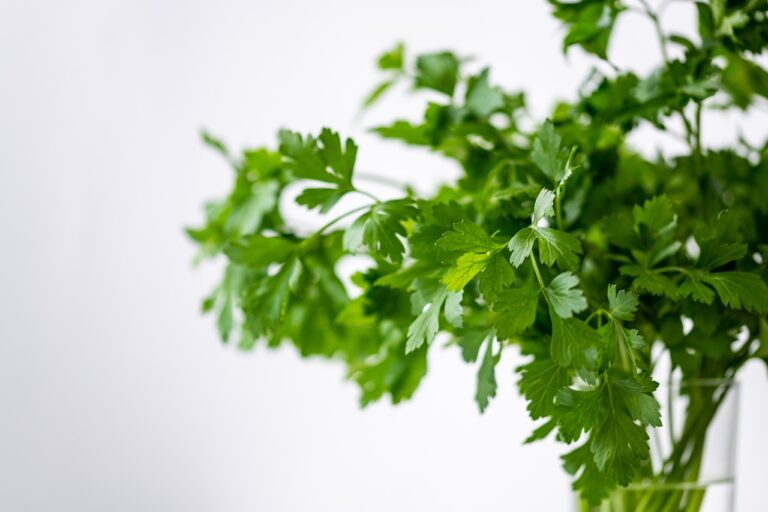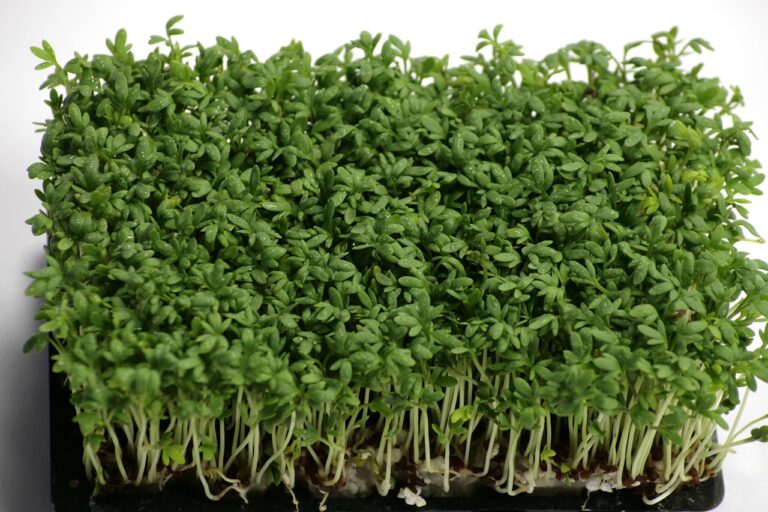Lemon Grass
Lemon grass offers numerous health benefits, such as antioxidants and anti-inflammatory properties. It’s an essential herb in various cuisines worldwide, especially in Thai dishes. To grow it successfully, provide warm, sunny conditions with well-draining soil. Harvest by cutting stalks at the base and propagate from the rhizome. Its essential oil can repel insects and has spiritual uses. Watch out for pests like leaf blight and diseases including root rot. Proper spacing and care are key. Lemon grass is not just a herb; it’s a versatile plant with endless possibilities in health, culinary, and beyond.
Health Benefits of Lemon Grass
Lemongrass offers an abundance of health benefits due to its rich content of antioxidants, vitamins, and minerals, essential for promoting overall well-being. The essential oil derived from lemongrass contains a compound called citral, which is known for its significant antioxidant properties. Antioxidants play an essential role in neutralizing harmful free radicals in the body, thereby reducing oxidative stress and lowering the risk of chronic diseases.
Moreover, lemongrass essential oil possesses anti-inflammatory properties that may help alleviate inflammation in the body. Chronic inflammation is linked to various health conditions such as heart disease, arthritis, and even cancer. By incorporating lemongrass into your routine, you may potentially reduce inflammation and support overall health.
Studies also suggest that lemongrass exhibits antimicrobial and antibacterial effects, which can aid in boosting the immune system and fighting off infections. This natural defense mechanism is particularly valuable in today’s world, where antibiotic resistance is becoming a significant concern.
In addition to its physical health benefits, lemongrass is known for its calming effects on the mind. It can help reduce stress, anxiety, and promote better sleep patterns. The holistic approach of lemongrass in supporting both physical and mental well-being makes it a valuable addition to a healthy lifestyle.
Culinary Uses of Lemon Grass
Exploring the culinary domain, lemongrass emerges as a vital herb known for infusing dishes with its distinctive and aromatic flavor profile. Culinary uses of lemongrass are varied and span various cuisines worldwide. In the Philippines, where it is known as tanglad, lemongrass finds its way into a wide array of dishes, providing a citrusy and invigorating note. East Indian lemongrass, native to several Asian countries, is primarily used for flavoring dishes, imparting a lemony essence that enriches both savory and sweet preparations. On the other hand, West Indian lemongrass is more suitable for cooking due to its robust flavor profile.
In Pacific Rim Thai cuisine, lemongrass plays a vital role, adding a fresh and zesty taste to dishes like Tom Yum soup or Thai curries. Its grassy and floral undertones complement the spicy and savory elements of these dishes, creating a harmonious balance of flavors. Beyond its culinary applications, lemongrass also holds a place in traditional medicine. Consumed as a tea, it is believed to help alleviate anxiety. Additionally, its aromatic properties make it a sought-after ingredient in perfumes. Lemongrass’s versatility extends even further into spiritual practices, where it is used in van van oil in Hoodoo traditions to bring luck in love affairs and ward off evil spirits.
Growing Conditions for Lemon Grass
I’ve found that Lemongrass thrives in warm, sunny locations with consistent humidity levels. It’s essential to provide this plant with well-draining, fertile loam soil to support its growth. Additionally, maintaining a pH level between 5.0-8.4 is vital for ideal development.
Sunlight and Watering
To ensure maximum growth, lemongrass plants need a minimum of 6 hours of sunlight daily along with regular watering to maintain moist soil conditions. Sunlight is essential for photosynthesis, the process by which plants convert light energy into chemical energy to fuel growth. Without sufficient sunlight, lemongrass may become leggy and produce fewer essential oils, affecting its flavor and fragrance. Watering is equally vital as lemongrass thrives in moist soil. However, it’s crucial to avoid waterlogging, which can result in root rot. A well-draining soil mix and a watering schedule that keeps the soil consistently moist but not waterlogged will support healthy lemongrass growth. Balancing sunlight exposure and proper watering is key to cultivating robust lemongrass plants.
Soil and Fertilizer
In cultivating strong lemongrass plants, ensuring the suitable soil composition and using nitrogen-rich fertilizers are essential for ideal growth and development. Lemongrass thrives in well-draining, fertile loam soil with a pH range of 5.0 to 8.4. It requires warm, sunny, and humid conditions, with an ideal growth temperature between 25-30°C. Regular watering is vital, especially for container-grown plants, to maintain adequate soil moisture levels. Nitrogen-rich fertilizers, such as slow-release options, can greatly enhance lemongrass growth. Commercially grown lemongrass necessitates proper plant spacing (90-150 cm), regular rainfall, and nitrogen fertilization for a successful harvest. By providing the right soil conditions and utilizing appropriate fertilizers, lemongrass plants can thrive and yield abundantly.
Harvesting and Propagation Tips
When harvesting lemongrass, make sure to cut the stalks at the base to stimulate new growth. This process helps the plant redirect its energy towards producing fresh shoots. To propagate lemongrass, divide stalks from the rhizome. Carefully separate the stalks making sure that each division has enough roots to support growth. Plant these divisions in a suitable growing medium with sufficient moisture.
For best growth, provide lemongrass with warm temperatures ranging between 25-30°C. The plant thrives in well-draining, fertile soil that allows its roots to access nutrients effectively. When cultivating lemongrass in containers, make sure they have proper drainage holes to prevent waterlogging. Regular watering is important for the plant’s development, but be careful not to overwater as this can lead to root rot.
Commercially, lemongrass is planted at higher densities to maximize yield. In home gardens, spacing the plants at 90-150 cm apart allows for best growth and easy maintenance. By following these harvesting and propagation tips, you can ensure a healthy and abundant lemongrass harvest while successfully multiplying your plant stock for future cultivation.
Lemongrass Essential Oil Applications
Employing lemongrass essential oil offers a multitude of practical applications in various products and practices due to its potent antiseptic and insect-repelling properties. Lemongrass essential oil is commonly integrated into soaps, insect repellents, candles, and aromatherapy products. This adaptable oil contains high levels of geraniol and citronellol, which contribute to its robust antiseptic qualities, making it a popular choice for disinfecting surfaces and promoting cleanliness.
One of the most well-known attributes of lemongrass essential oil is its effectiveness as an insect repellent. The oil’s unique scent acts as a natural deterrent to mosquitoes, flies, ants, and other pests, making it a valuable addition to various insect control applications. Whether used in sprays, diffusers, or candles, lemongrass oil can help create a bug-free environment without the need for harsh chemicals.
Beyond its practical applications, lemongrass essential oil holds spiritual significance in practices like Hoodoo, where it is a key component of van van oil used for spiritual purposes. Additionally, beekeepers utilize lemongrass oil to attract bees to hives or swarms due to its similarity to honeybee pheromones, making it a useful tool in beekeeping practices. The diverse range of uses for lemongrass essential oil highlights its value in both household and specialized applications.
Common Pests and Diseases
Common pests and diseases pose significant challenges to the cultivation of lemongrass, affecting its overall health and productivity. Among the common pests that afflict lemongrass are aphids, spider mites, and grasshoppers. These pests primarily target the leaves and stems of the plant, causing damage that can hinder its growth and vigor. On the other hand, lemongrass is also vulnerable to various diseases such as leaf blight, rust, and root rot. Root rot, in particular, can be a severe threat to lemongrass as it affects the plant’s root system, impeding its ability to uptake nutrients and water efficiently.
To mitigate these issues, it is essential to implement preventative measures. Proper spacing between plants, ensuring good air circulation, and conducting regular inspections are essential practices to prevent pest infestations and the spread of diseases in lemongrass crops. In case of pest infestation, natural remedies like neem oil or insecticidal soap can be effective in controlling pests without causing harm to the plant or the environment.
Furthermore, maintaining ideal growing conditions is paramount in reducing the risk of common pests and diseases in lemongrass. Adequate drainage to prevent waterlogging, avoiding overwatering, and ensuring the plant receives sufficient sunlight are all factors that contribute to the overall health and resilience of lemongrass against pests and diseases.
Creative Ways to Use Lemon Grass
Incorporating lemongrass into culinary creations adds an invigorating tangy flair to a variety of dishes. In Southeast Asian cooking, lemongrass is a versatile ingredient that can be used in creative ways to enrich the flavor profile of various dishes. One innovative use of lemongrass is infusing it into beverages such as teas, cocktails, and syrups. The lemony aroma and taste of lemongrass can provide a unique twist to these drinks, making them revitalizing and aromatic.
Additionally, lemongrass can be utilized in marinades for meats, seafood, and vegetables. Its tangy notes can complement the savory elements of the marinade, resulting in a flavorful and aromatic dish. Blending lemongrass into salad dressings or sauces is another inventive way to incorporate this ingredient into your cooking. The zesty and aromatic touch of lemongrass can enhance the taste of the dressing, adding a burst of freshness to your salads or dishes.
Moreover, lemongrass can be used in baking to add a subtle citrus note to cakes, cookies, and desserts. By finely chopping or grinding lemongrass, you can infuse your baked goods with a delicate lemon flavor, creating a unique and flavorful treat. Experimenting with lemongrass in different culinary applications can open up a world of creative possibilities in the kitchen.



